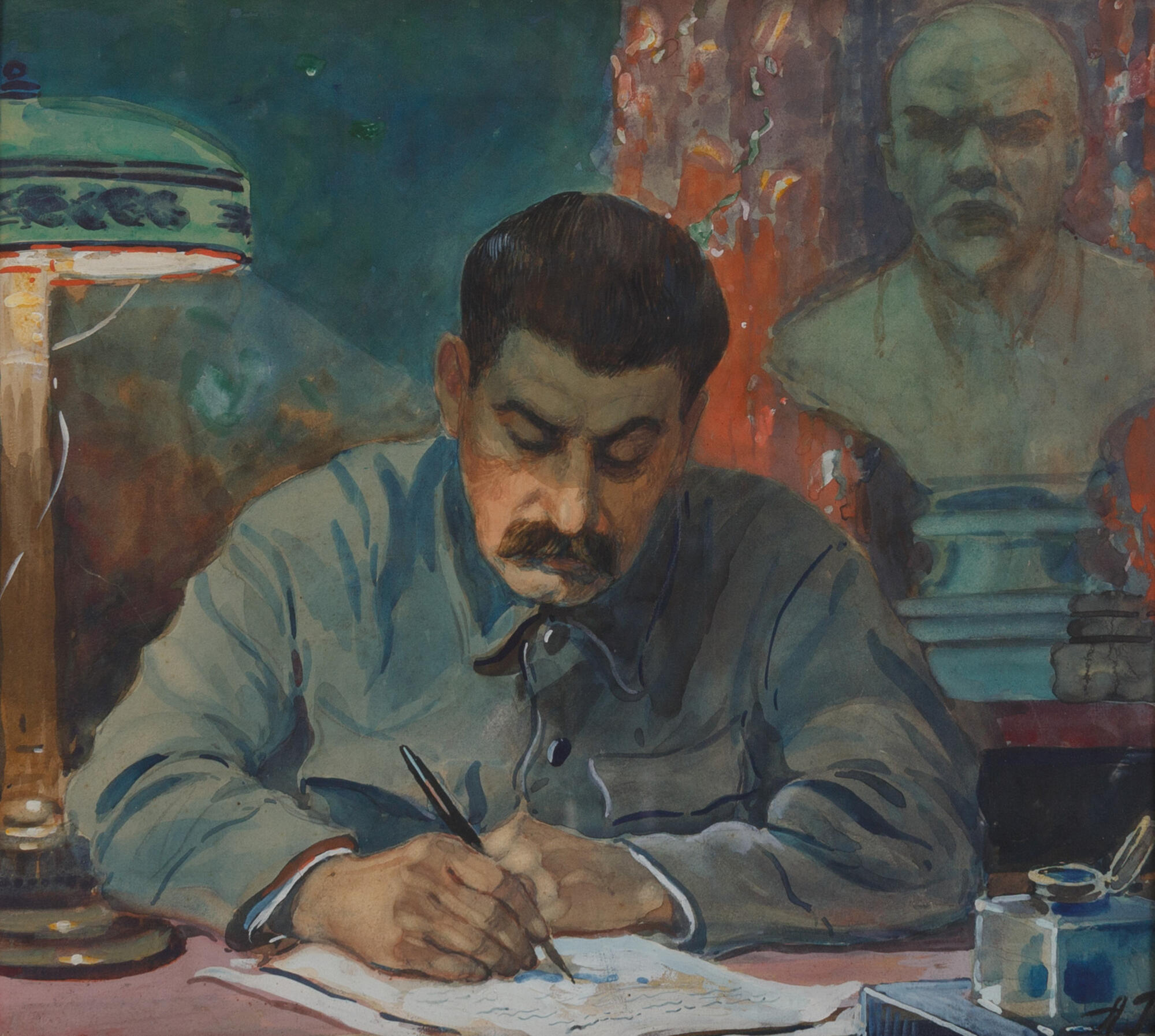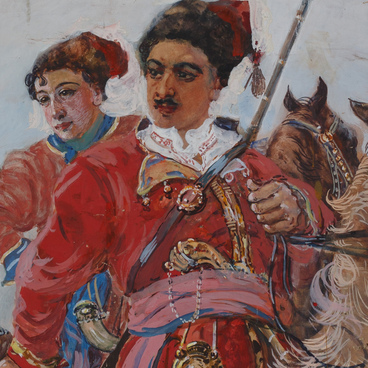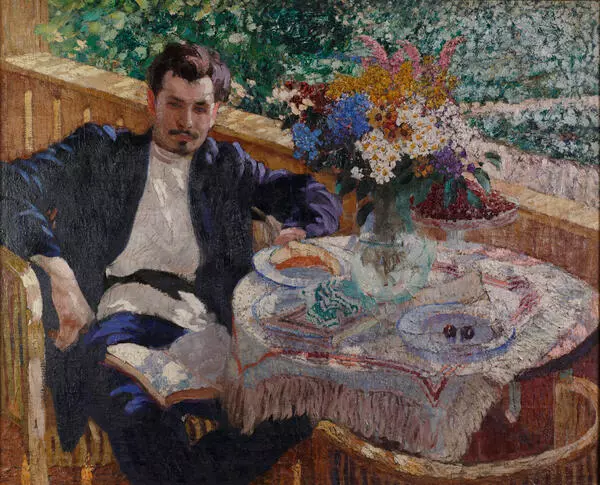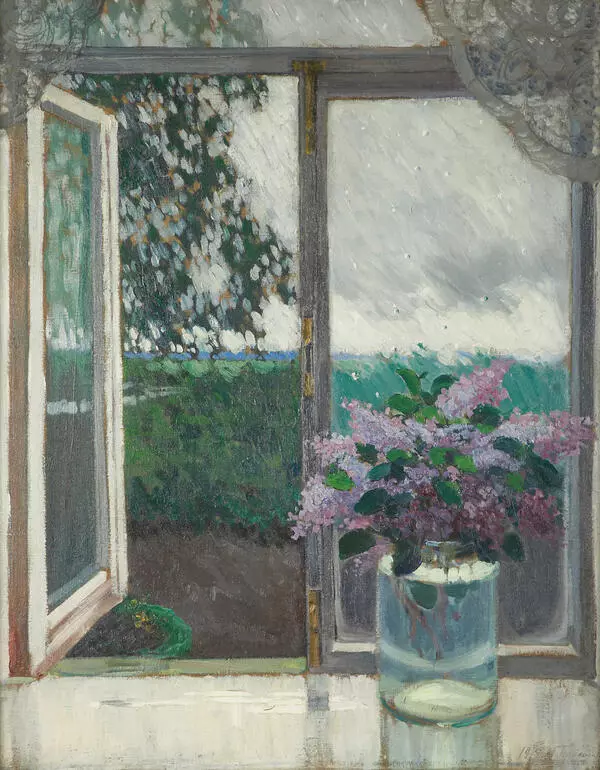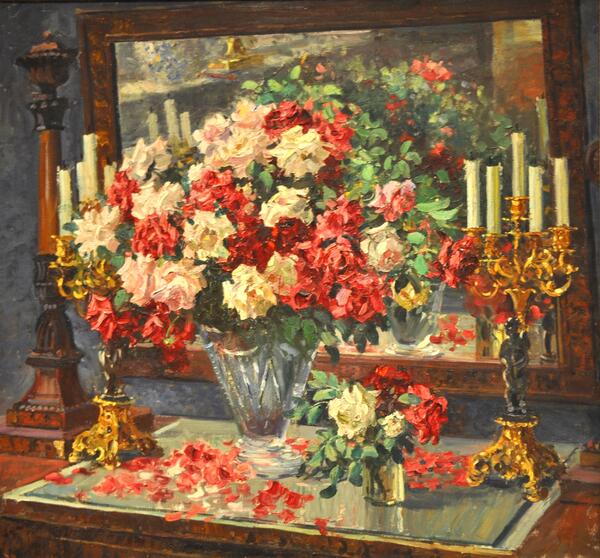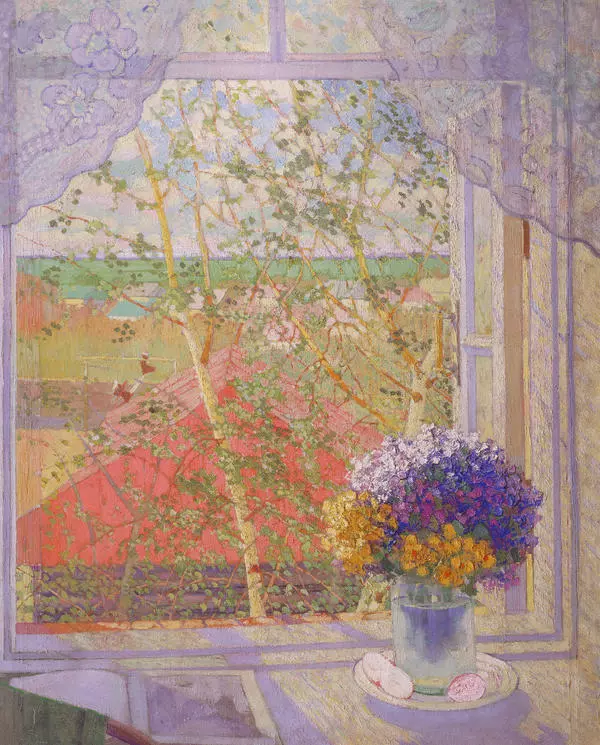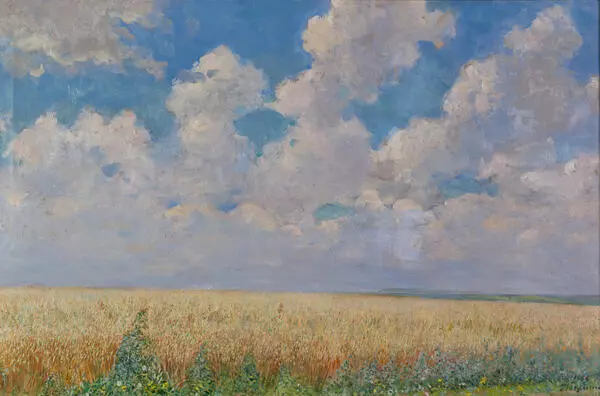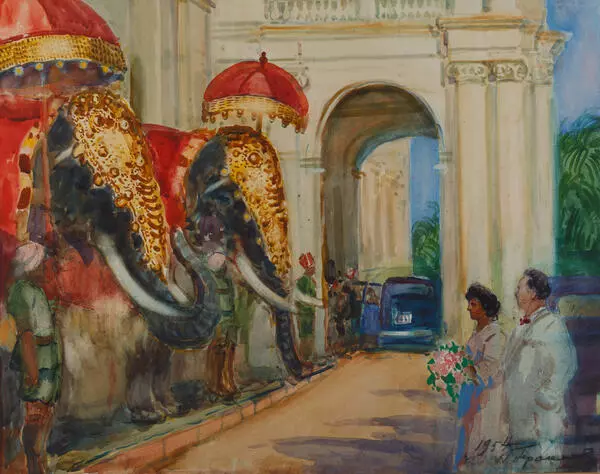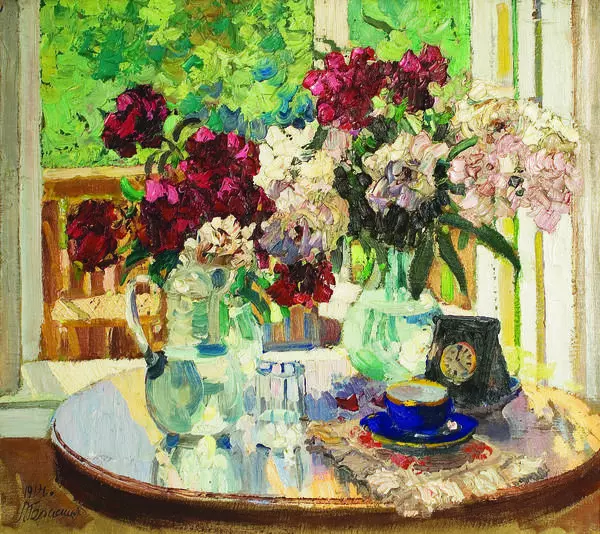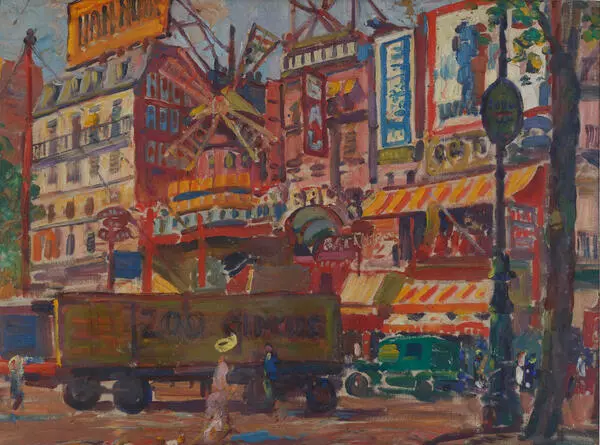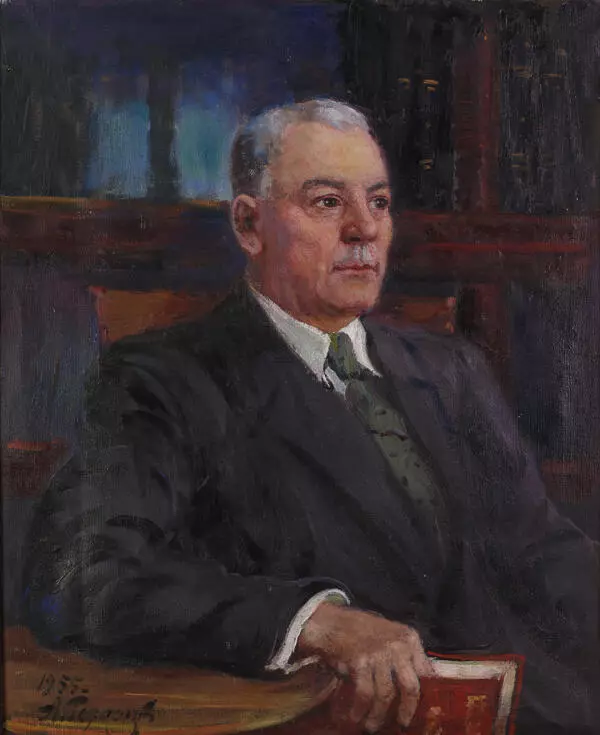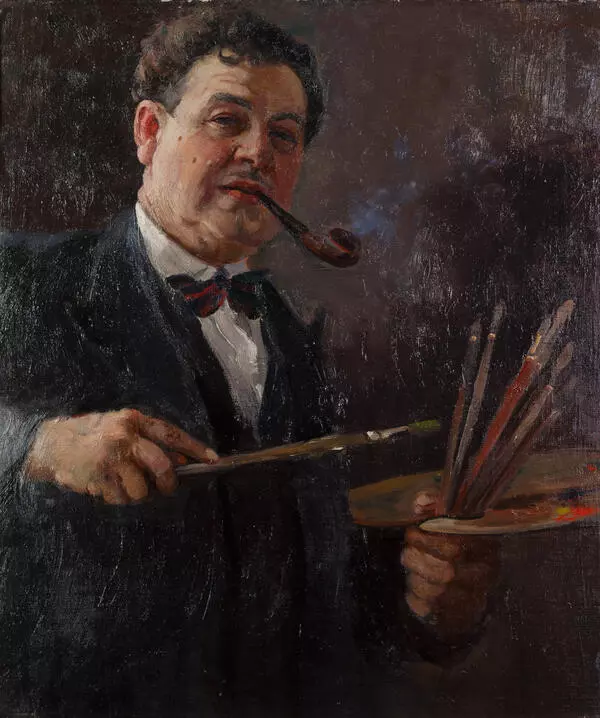Alexander Gerasimov was the first president of the Academy of Arts of the USSR. He played a big part in the formation of Soviet realistic art. Alexander Gerasimov is rightly considered the greatest portrait painter of the Soviet era: the artist created a gallery of portraits of prominent figures of the Soviet state, commanders of the Soviet army, and Heroes of the Soviet Union.
Alexander Gerasimov became the most successful painter of Joseph Stalin’s portraits and contributed to the building of his cult of personality. The portraits were spreading throughout the country in a huge number of copies and replications, they were to present the Soviet leader where no one had ever seen him before. Therefore, the depicted man known to many as Stalin was actually an image of Stalin by Gerasimov.
Gerasimov’s works, made in bold and daring strokes, illuminated by the glimmer of gold, mirrors and crystal, colored by the glare of the sun, portray the Soviet reality as if it were “vivid and sparkling”. Gerasimov was endowed with the gift of portraying his models with impressive life-like resemblance, which allowed him to enter the Moscow School of Painting, Sculpture and Architecture without prior training. In his memoirs, Alexander Mikhailovich wrote that the four years spent in the architectural department helped him master the watercolor technique to perfection. His airy watercolors are indeed artful to the point of virtuosity.
This small watercolor work was made in 1930. The portrait of Joseph Stalin seems austere. The figure is stable. The significance of the leader is beyond any doubt, nor does it require further proof. The image is rather concise, yet expressive. This general feeling of stability and perseverance is emphasized by the elaborate and well-balanced composition of the portrait. In 1933, by the order of Stalin, the layout of his personal study was modified, and its interiors changed. A neutral background and a minimum of surrounding objects help to focus on the model. What is important in the portrait are the recognizable characteristic features of Joseph Stalin and the captured expression on his face. In this picture, the head of the Soviet state looks alive and true to life, with flattering hyperboles delicately disguised and attenuated. The artist managed to make an official portrait that does not look dull or cold.
Alexander Gerasimov became the most successful painter of Joseph Stalin’s portraits and contributed to the building of his cult of personality. The portraits were spreading throughout the country in a huge number of copies and replications, they were to present the Soviet leader where no one had ever seen him before. Therefore, the depicted man known to many as Stalin was actually an image of Stalin by Gerasimov.
Gerasimov’s works, made in bold and daring strokes, illuminated by the glimmer of gold, mirrors and crystal, colored by the glare of the sun, portray the Soviet reality as if it were “vivid and sparkling”. Gerasimov was endowed with the gift of portraying his models with impressive life-like resemblance, which allowed him to enter the Moscow School of Painting, Sculpture and Architecture without prior training. In his memoirs, Alexander Mikhailovich wrote that the four years spent in the architectural department helped him master the watercolor technique to perfection. His airy watercolors are indeed artful to the point of virtuosity.
This small watercolor work was made in 1930. The portrait of Joseph Stalin seems austere. The figure is stable. The significance of the leader is beyond any doubt, nor does it require further proof. The image is rather concise, yet expressive. This general feeling of stability and perseverance is emphasized by the elaborate and well-balanced composition of the portrait. In 1933, by the order of Stalin, the layout of his personal study was modified, and its interiors changed. A neutral background and a minimum of surrounding objects help to focus on the model. What is important in the portrait are the recognizable characteristic features of Joseph Stalin and the captured expression on his face. In this picture, the head of the Soviet state looks alive and true to life, with flattering hyperboles delicately disguised and attenuated. The artist managed to make an official portrait that does not look dull or cold.
